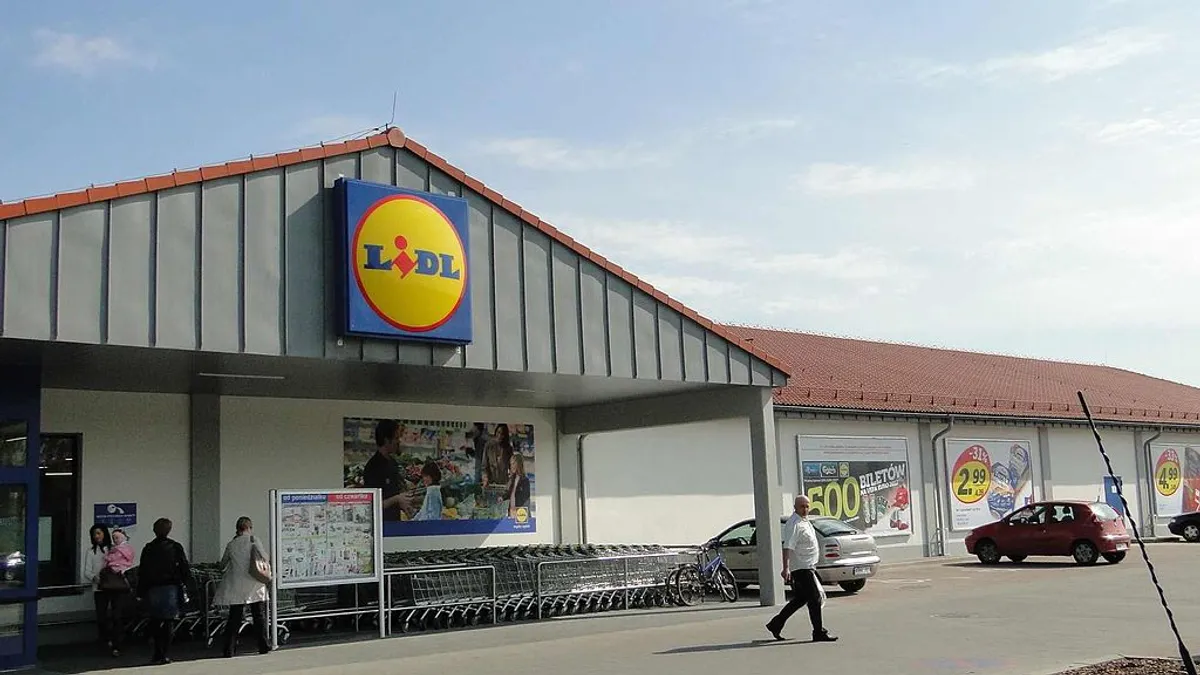Dive Brief:
- In a recent report, Barclays analysts noted a combination of “ample spending power, good population density, and generally weak or vulnerable retailers” makes the Mid-Atlantic and southeastern U.S. profitable places for German retailer to expand, according to Supermarket News.
- The most vulnerable retailers, Barclays notes, are those with low sales per square foot. This includes Ingles Markets, Weis Markets, and Southeastern Grocers.
- The report found those companies that have competed with Lidl in Europe, like WalMart and Ahold Delhaize, have the best shot at competing effectively against the discounter.
Dive Insight:
The Mid-Atlantic and southeastern grocery markets are crowded, and with strong players like Wegmans, Publix and Aldi expanding in these areas, the competition is only heating up. Still, Barclays and other industry observers believe these markets are places where the German discounter has plenty of room to grow.
This is partly due to a relatively low number of retailers that can counter Lidl’s aggressive pricing strategy. Traditional retailers like Ingles and Southeastern Grocers, which operates Bi-Lo and Winn-Dixie stores, are particularly vulnerable because they’re not generating high sales per square foot, and they have a lot of stores in the same markets Lidl is planning to occupy.
These supermarkets haven’t stood idly by in recent months, however. Southeastern Grocers recently announced a major update to its private label selection, while Food Lion, another chain with lots of stores in the Mid-Atlantic and southeastern U.S., has undergone significant changes as part of its “Fresh, Easy and Affordable” initiative.
But Lidl will no doubt prove a formidable foe. Not only does the German discounter trade on its pricing, but its U.S. stores will be bigger than those it operates in Europe, and have more of the fresh products and theater that American consumers expect. The company seems to have keenly studied the American market and adjusted its format accordingly before coming to the U.S.
The most interesting battles for Lidl will come against its hard discounter competitor, Aldi, and consumer favorites Publix and Wegmans. In Aldi, the company faces a near mirror image of itself. Publix and Wegmans, meanwhile, offer exceptional in-store experiences, including a robust prepared foods selection. Consumers with more discretionary spending may see more value in a big, festive Wegmans than in a limited-size Lidl.
With so many major grocery players converging at once, the east coast has become the region to watch. And while it’s tough to say who will prevail at this point, it’s a safe bet that consumers will come out highly satisfied.










